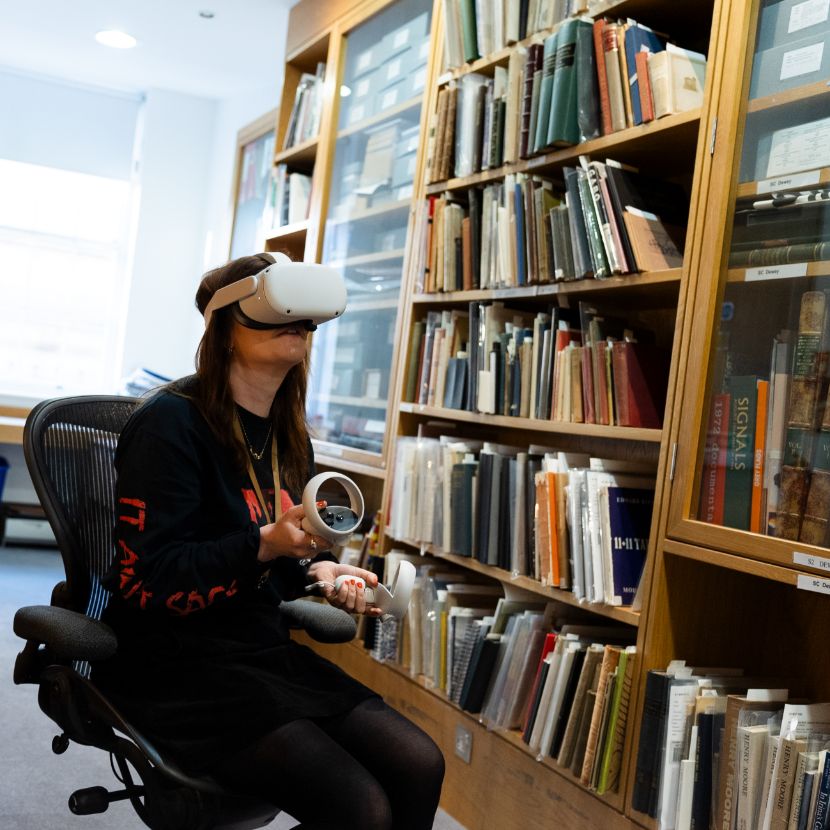
04 Mar 2024
VR offers chance to see city’s state-of-the-art installation in a new light
Art lovers in Leeds have the chance to step inside a groundbreaking urban light and sound installation thanks to the latest VR technology.
A Light and Sound Transit by Berlin-based artist, sound sculptor and composer Hans Peter Kuhn had transformed Neville Street in Leeds city centre, where it was installed as a temporary public artwork.
Comprised of lines of light, likened to a chain of pearls by the artist, the artwork changed every morning so commuters would see a different pattern each day. It featured 3,200 individual LED lights and 96 distinct sonic compositions.
Needing a new home due to the redevelopment of Leeds Train Station, project partners Leeds Museums and Galleries and the Henry Moore Institute set about finding a way to capture the story and journey of what was a landmark public artwork.
As a result, the immersive piece can now be enjoyed in state-of-the-art fashion, and is available online at henry-moore.org/light-neville-street and to experience in person at Leeds Museums and Galleries’ Archive of Sculptors’ Papers located at the Henry Moore Institute.
The new collection includes a 360-degree video which can be experienced through a VR headset along with the artist’s early sketches, design proposals and technical documentation.
Errin Hussey, an archivist with Leeds Museums and Galleries, said: “It’s been so interesting working with the University of Leeds and project producers MAAP to accession this significant public artwork into our archive in consultation with Hans Peter Kuhn.
“This project has presented us with a unique opportunity to consider how to capture the story behind the decommissioning of a public work of art in addition to its original commissioning and existence while on display in the public realm. These discussions have uncovered otherwise hidden facets of the history of this work and will no doubt encourage new thinking about public sculpture for current and future researchers.”
Launched in 2009, A Light and Sound Transit was one of only a handful of public sculptural works in the world that uses sound, and one of even fewer that employs computing technologies.
The piece was always intended to be temporary and was an important part of the early work on the city’s South Bank regeneration project.
Sue Ball, director of project producers MAAP, said: “'A Light and Sound Transit’ continues to hold international significance in helping reshape what public sculpture can be, from a static physical form to one that embraces technology and the immersive.
“I am delighted that the project will live on in Leeds, albeit in a slightly different form, for generations to come to learn about this important commission.”
Councillor Jonathan Pryor, Leeds City Council’s deputy leader and executive member for economy, culture and education, added: “It’s fantastic to see the city’s cultural community working together to secure this innovative piece of public artwork for future generations.
“Animating and transforming public spaces with artwork is a key part of the city’s regeneration and development story and it’s important that we preserve and document the many different steps we take on that journey.”
Ends
For media enquiries contact:
Leeds City Council Communications team
communicationsteam@leeds.gov.uk